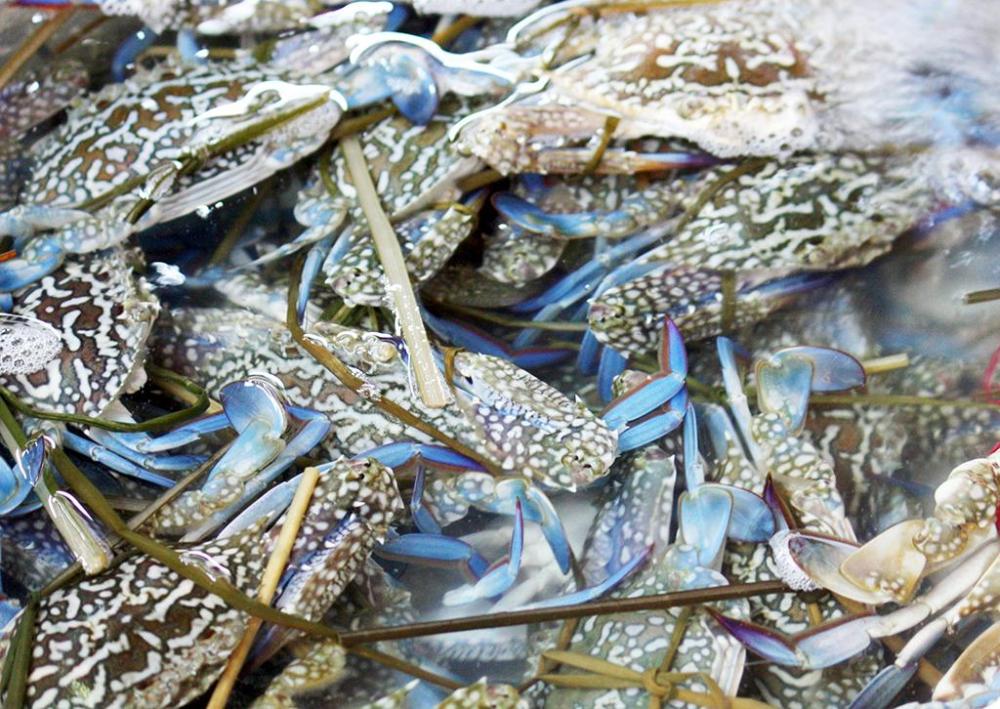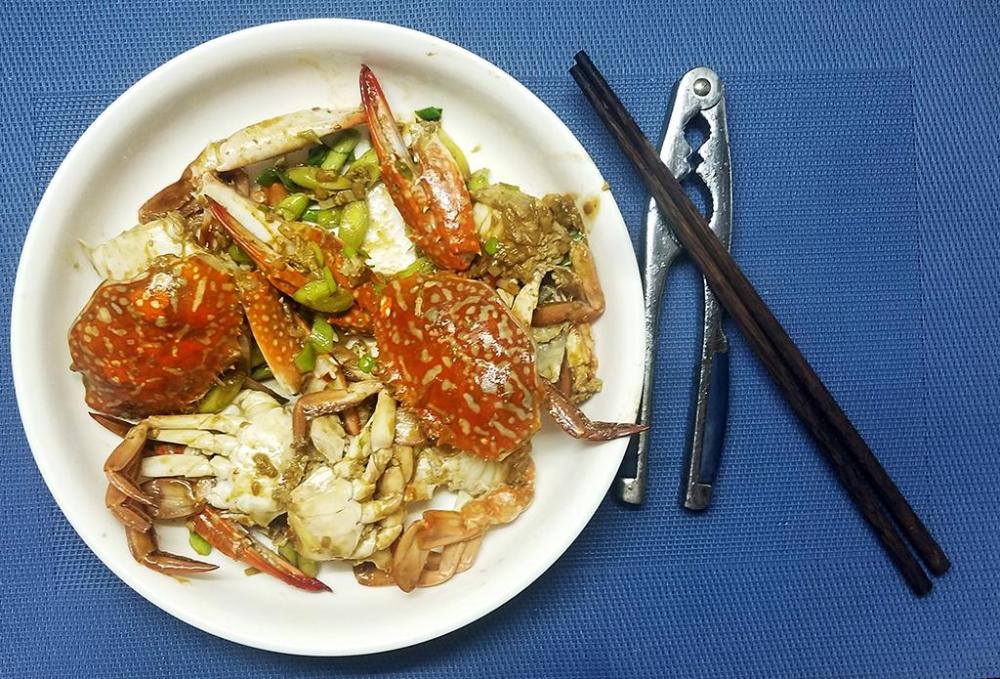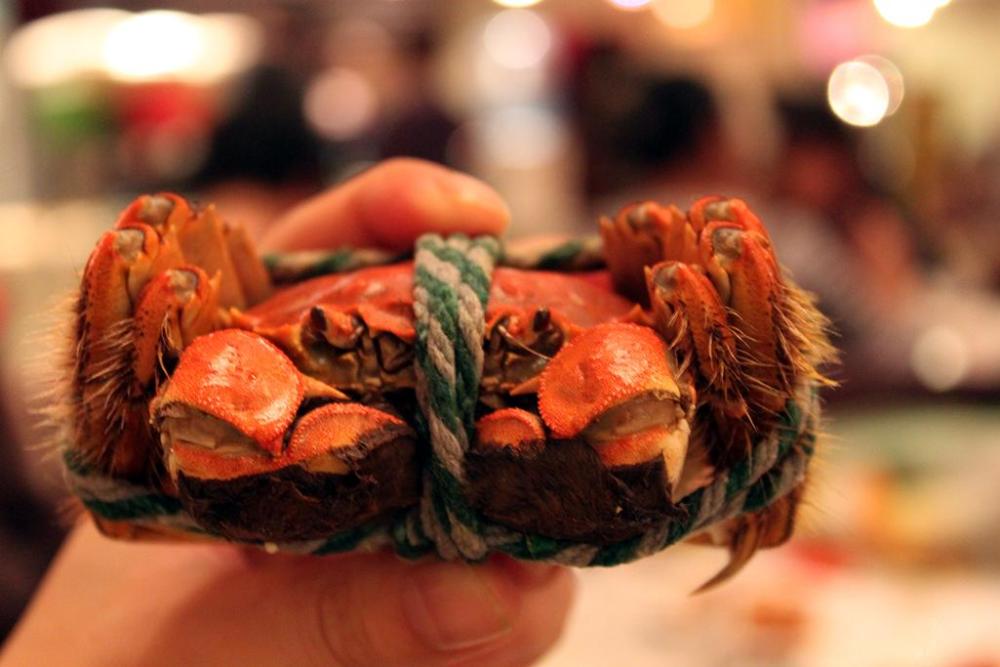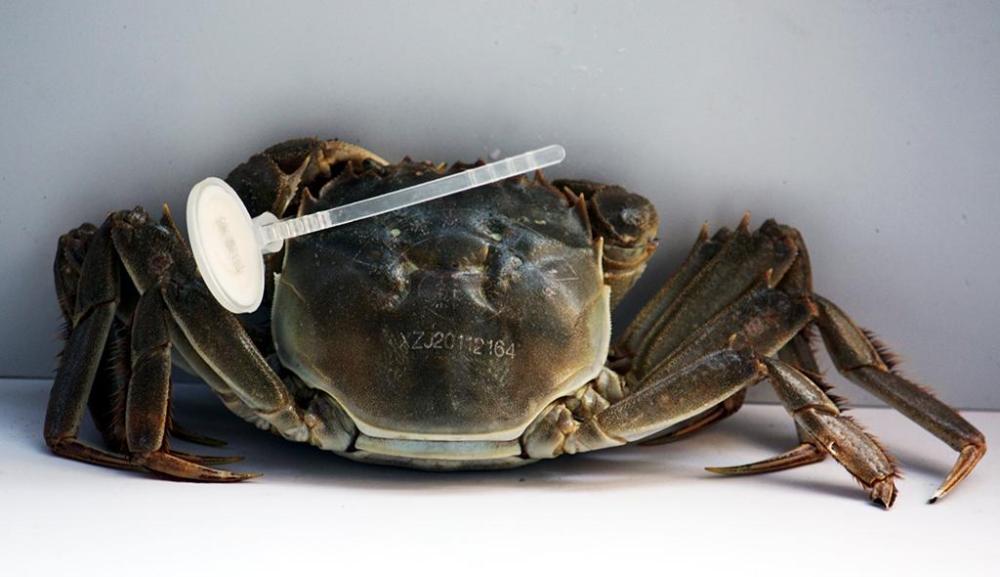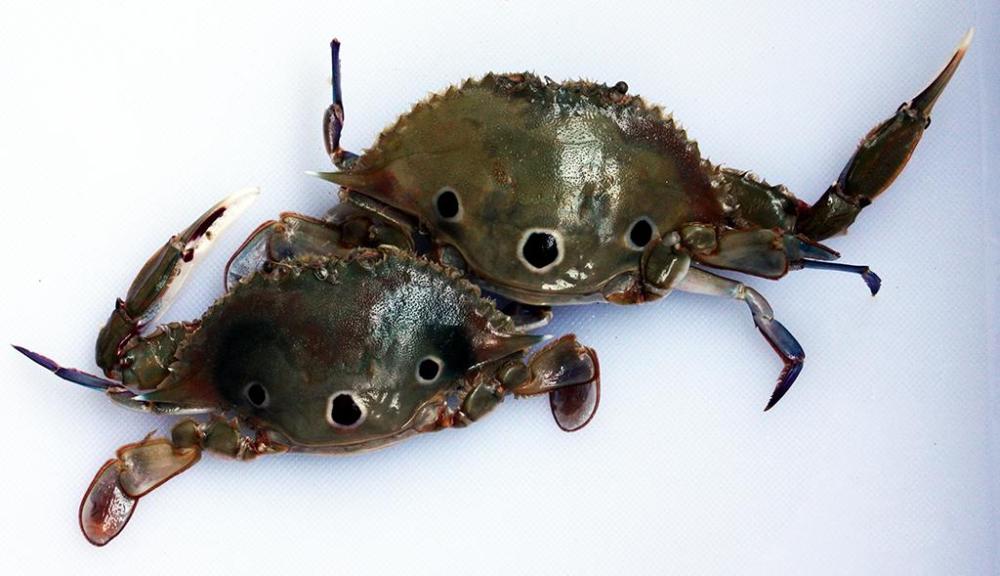17. 螃蟹 (páng xiè), 大闸蟹 (dà zhá xiè), 三斑蟹 (sān bān xiè)
I had a notion to do a seafood piece for this topic, but quickly realised that would stretch too far. There’s a lot of it about. So, I’m splitting it up. Today, my favourite. Always a good place to start.
But first. We are lucky here. Unlike most Chinese provinces, we are not landlocked, so have access to the sea. 409 km / 658 miles to the south of Liuzhou (4 hours by road, 2 by train), is the coastal city of Beihai, Guangxi’s seafood central. This city lies on the Tonkin Gulf, close to the border with Vietnam. Fresh sea food is shipped daily to local restaurants and to my local markets and supermarkets. Near my home is the excellent 北海渔家风味 (běi hǎi yú jiā fēng wèi) restaurant, literally ‘Beihai Fishing Family Flavour’ and there are many others.
Beihai Fishing Family Flavour
As with most of these restaurants, seafood is displayed live in tanks, you make your selection and they cook it. One place has an ‘all you can eat’, fixed price menu with a twist. If you order the food, you have to eat it. They fine extravagantly for any leftovers.
So, I can get what I want, whether I recognise it or not. And what I want most is crab. Well, what I can afford and want is crab. Some species are crazily priced.
We mostly get 兰花蟹 (lán huā xiè), blue swimming crabs Portunus armatus. These have leapt in price recently – don’t know why, but are still just about affordable.
I usually cook these at home. Either stir-fried with garlic and black fermented beans or my late wife’s favourite, with garlic, chilli and oyster sauce – Ken’s Killer Krab. Restaurants tend to go more for the former – the Cantonese influence. The proudest moment in my life came when mother-in-law asked me to cook the crabs for a big family dinner as I “do it better!” A rare compliment from a Chinese housewife! Even rarer for a mother-in-law.
Although most famed in Shanghai, 大闸蟹 (dà zhá xiè), Eriocheir sinensis, mitten crabs, aka hairy crabs are also very popular here, if expensive.
An August* treat, these small crabs are most highly prized if from 阳澄湖 (yáng chéng hú) - Yangcheng Lake in Suzhou, about 100 kilometres / 60 miles north-west of Shanghai. Such was the amount of fraud regarding these prized specimens in the past, that today, all genuine Yangcheng crabs are laser etched with a trackable serial number. These can fetch up to $100 / kilo wholesale price. In a restaurant, the sky is the limit.
Cheaper versions from other waters (previously passed off as Yancheng) are available in my local supermarket when in season. These and the real ones from Suzhou are separated into male and female and priced quite differently. The females, marked 母 (mǔ) come in at a significantly higher price as they contain the roe, considered quite a delicacy. The males, 公 (gōng) also have good meat, but obviously lack the roe. I have only had the Yangcheng version once – in a 5 star Liuzhou hotel restaurant, both genders – and can happily confirm that they are better, being sweeter, meatier, and with a certain 我不知道, Chinese for “Je ne sais pas.”
An odd crab that sometimes turns up my supermarket is 三斑蟹 (sān bān xiè), the three-spot swimming crab, Portunus sanguinolentus. Slightly larger than the above two crabs, these are fun to look at when raw, but lose their colouring when cooked. The flavour is OK, but inferior. They are cheaper, though.
3-spot crab fried rice. You can see the uncooked shell top right.
Cooked 3-spot Crab
Large crabs of undetermined** species are apparently reserved for the city’s Cantonese restaurants, something I try to avoid. Not only are they wildly expensive places; I find the food bland and ultimately boring.
We also get largish crab claws, but always frozen. I only bought once. I prefer fresh at all times. And when It's so available, why go frozen?
Crab Claws
* Hairy crab season falls in the 6th month of China's traditional solar-lunar calendar. This usually happens in August by the Gregorian western calendar.
** undetermined by me.


